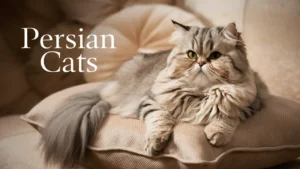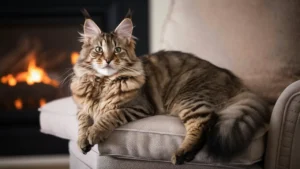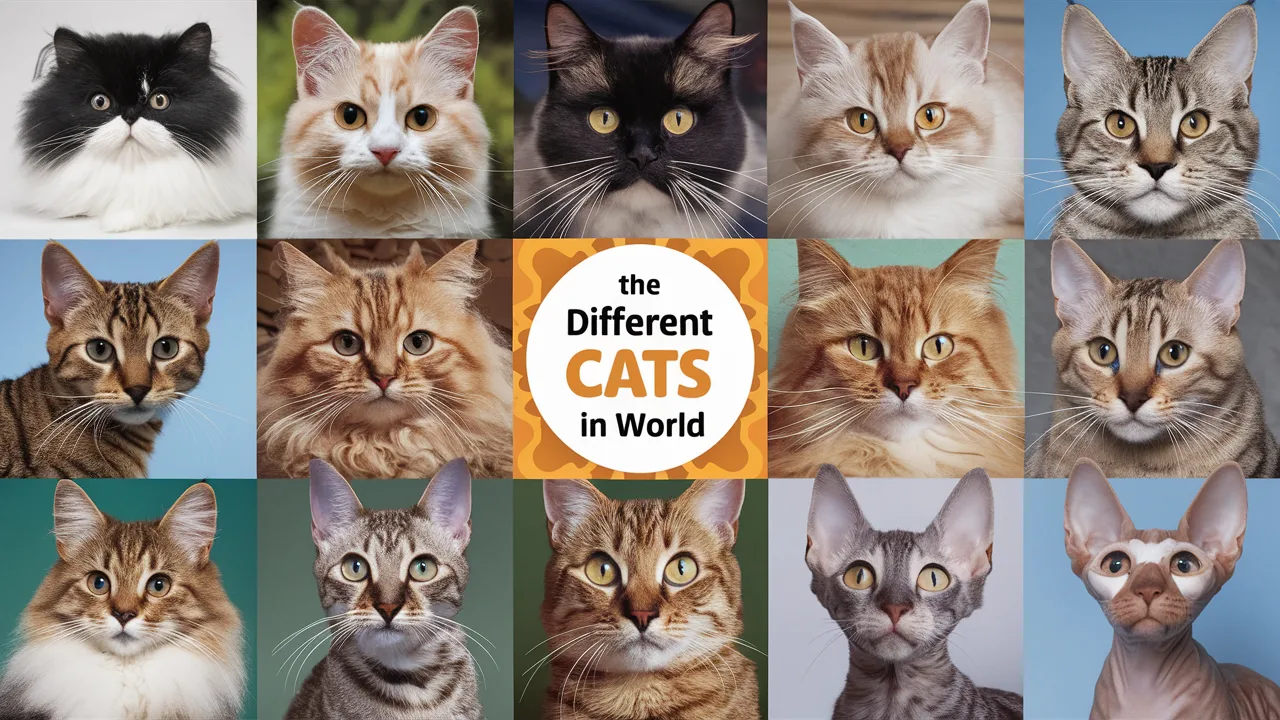How Many Breeds of Cats Are There in the World?
Introduction
Cats have been our companions for thousands of years, captivating us with their charm, grace, and mysterious nature. Whether you’re a seasoned cat lover or a newcomer to the feline world, understanding the diversity of cat breeds can enhance your appreciation for these incredible animals. From the fluffy Persians to the sleek Siamese, each breed has its own unique characteristics and history. But how many breeds of cats are there in the world? Let’s dive into the fascinating world of cat breeds and discover the answer.
Overview of Cat Breeds
When we talk about cat breeds, we’re referring to distinct groups of domestic cats that have been selectively bred for specific traits, such as coat color, body size, and personality. These breeds are recognized and standardized by various cat fancier organizations, which set the criteria for what constitutes a particular breed.
Major Cat Breed Organizations
Several organizations around the world are dedicated to the recognition and classification of cat breeds. The three most prominent ones are the Cat Fanciers’ Association (CFA), the International Cat Association (TICA), and the Fédération Internationale Féline (FIFe).
Cat Fanciers’ Association (CFA)
The CFA is one of the oldest and most respected cat registries in the world, founded in 1906. It recognizes 44 distinct breeds, each with its own breed standard. The CFA is known for its rigorous standards and detailed breed descriptions.
Examples of CFA Breeds
- Persian: Known for its long, luxurious coat and round face.
- Siamese: Famous for its sleek body, almond-shaped eyes, and vocal personality.
- Maine Coon: One of the largest domesticated cat breeds, known for its friendly nature and tufted ears.
International Cat Association (TICA)
TICA is another major registry, known for its inclusivity and international reach. Founded in 1979, TICA recognizes 71 breeds, making it one of the most comprehensive cat registries.
Examples of TICA Breeds
- Bengal: Recognized for its striking leopard-like spots and energetic personality.
- Sphynx: Notable for its hairless appearance and affectionate nature.
- Savannah: A hybrid breed known for its tall, slender build and wild appearance.
Fédération Internationale Féline (FIFe)
FIFe, founded in 1949, is a federation of national members and is primarily active in Europe. It recognizes 48 breeds, each meticulously documented and promoted through international cat shows.
Examples of FIFe Breeds
- British Shorthair: Known for its dense, plush coat and round face.
- Norwegian Forest Cat: Distinguished by its thick, water-repellent coat and robust build.
- Russian Blue: Recognized for its short, silvery-blue coat and striking green eyes.
Popular Cat Breeds Around the World
Some cat breeds enjoy global popularity due to their unique looks and charming personalities. Here are a few of the most beloved breeds:
Siamese
The Siamese cat is one of the oldest and most recognizable breeds, known for its striking blue eyes, short coat, and talkative nature.
Persian

With its long, flowing coat and serene demeanor, the Persian cat has been a favorite for centuries. It’s the epitome of a lap cat, enjoying a life of leisure and pampering.
Maine Coon

The gentle giant of the cat world, the Maine Coon is renowned for its large size, friendly personality, and tufted ears. It’s a perfect family pet.
Bengal
The Bengal cat stands out with its wild appearance, featuring leopard-like spots or marbling. This breed is energetic, intelligent, and loves to play.
Sphynx
The Sphynx cat is instantly recognizable by its lack of fur. Despite its unusual appearance, it’s known for being extremely affectionate and social.
Rare and Exotic Cat Breeds
While some breeds are household names, others are rare and exotic, capturing the fascination of cat enthusiasts.
Lykoi
Often called the “werewolf cat,” the Lykoi has a unique appearance with sparse hair and a striking resemblance to a werewolf. It’s a relatively new and rare breed.
Khao Manee
Known as the “Diamond Eye” cat, the Khao Manee has a pure white coat and stunning, often mismatched, blue and green eyes. This breed hails from Thailand and is considered very rare.
Sokoke
The Sokoke cat, originating from the coastal forests of Kenya, is known for its unique, blotched tabby pattern and wild appearance. It’s one of the rarest cat breeds in the world.
Natural Breeds
Natural breeds are those that have developed without significant human intervention. They have adapted to their environments over time, resulting in unique traits.
Definition and Examples
Natural breeds, such as the Maine Coon and the Norwegian Forest Cat, evolved naturally in specific regions. These cats often have traits that helped them survive in their environments, such as thick coats for cold climates.
Differences from Human-Developed Breeds
Unlike human-developed breeds, which are selectively bred for specific traits, natural breeds evolved through natural selection. This often results in a more robust genetic makeup and fewer hereditary health issues.
Human-Developed Breeds
Human-developed breeds are created through selective breeding to emphasize certain physical or personality traits. This process can take many years and generations of cats.
Definition and Examples
Breeds like the Persian and the Sphynx were developed through selective breeding. Breeders aim to highlight desirable traits, such as the Persian’s long coat or the Sphynx’s lack of fur.
Process of Developing New Breeds
Developing a new breed involves selecting cats with specific traits and breeding them over several generations. This process requires careful planning to ensure genetic diversity and health.
Hybrid Breeds
Hybrid breeds are the result of crossing domestic cats with wild feline species. These cats often have exotic looks and unique temperaments.
Definition and Examples
- Savannah: A cross between a domestic cat and a serval, known for its tall, slender build and wild appearance.
- Bengal: Developed by crossing domestic cats with Asian leopard cats, Bengals have a striking, spotted coat.
Controversies and Considerations
Hybrid breeds can be controversial due to concerns about their impact on wildlife and potential health issues. It’s important to consider these factors when choosing a hybrid breed.
Breeding and Genetic Health
Cats’ health and wellbeing depend on responsible breeding techniques.Unethical breeding can lead to genetic health issues and suffering.
Importance of Responsible Breeding
Responsible breeders prioritize the health and temperament of their cats over physical traits. They ensure genetic diversity and screen for hereditary diseases.
Common Genetic Health Issues
Certain breeds are prone to specific health issues, such as hypertrophic cardiomyopathy in Maine Coons and polycystic kidney disease in Persians. Understanding these risks is essential for prospective cat owners.
Adoption vs. Purchasing from Breeders
Choosing between adopting a cat and purchasing from a breeder is a significant decision that comes with ethical considerations.
Pros and Cons of Each Option
Adopting a cat from a shelter or rescue organization saves a life and is often less expensive than purchasing from a breeder. However, breeders can provide detailed information about a cat’s lineage and health.
Ethical Considerations
Adopting helps reduce the number of homeless animals and supports the efforts of rescue organizations. If you choose to buy from a breeder, ensure they follow ethical practices and prioritize the well-being of their cats.
Caring for Different Cat Breeds
Different cat breeds have varying care requirements. Understanding these needs is crucial for providing the best care for your feline friend.
Specific Care Requirements for Popular Breeds
- Persian: Requires daily grooming to prevent matting and regular eye cleaning.
- Siamese: Needs mental stimulation and interaction to prevent boredom and behavioral issues.
- Maine Coon: Benefits from regular grooming and a diet that supports its large size.
General Care Tips
Regardless of the breed, all cats need a balanced diet, regular veterinary check-ups, and plenty of love and attention. Providing a stimulating environment with toys and climbing structures can help keep your cat happy and healthy.
Conclusion
With over 70 recognized cat breeds, the world of cats is incredibly diverse. Each breed has its own unique characteristics, history, and care requirements. Whether you prefer the elegance of a Siamese or the playful nature of a Bengal, there’s a cat breed to suit every personality and lifestyle. Understanding the different breeds can help you make an informed decision when choosing a feline companion, ensuring a happy and healthy relationship for years to come.Some cats are the among the largest cats breeds .
FAQs
What is the most popular cat breed?
The Persian cat is often considered one of the most popular cat breeds due to its luxurious coat and gentle temperament.
How can I find a reputable cat breeder?
Look for breeders who are registered with major cat fancier organizations, provide health guarantees, and prioritize the well-being of their cats over profit.
Are mixed-breed cats healthier than purebred cats?
Mixed-breed cats often have a more diverse genetic makeup, which can result in fewer hereditary health issues compared to purebred cats.
What should I consider before adopting a cat?
Consider your lifestyle, the time you can dedicate to a pet, and any allergies or health issues in your household. It’s also important to research the specific needs of the breed you’re interested in.
How can I determine the breed of my cat?
A veterinarian or a genetic testing service can help determine your cat’s breed based on physical characteristics and genetic markers.


